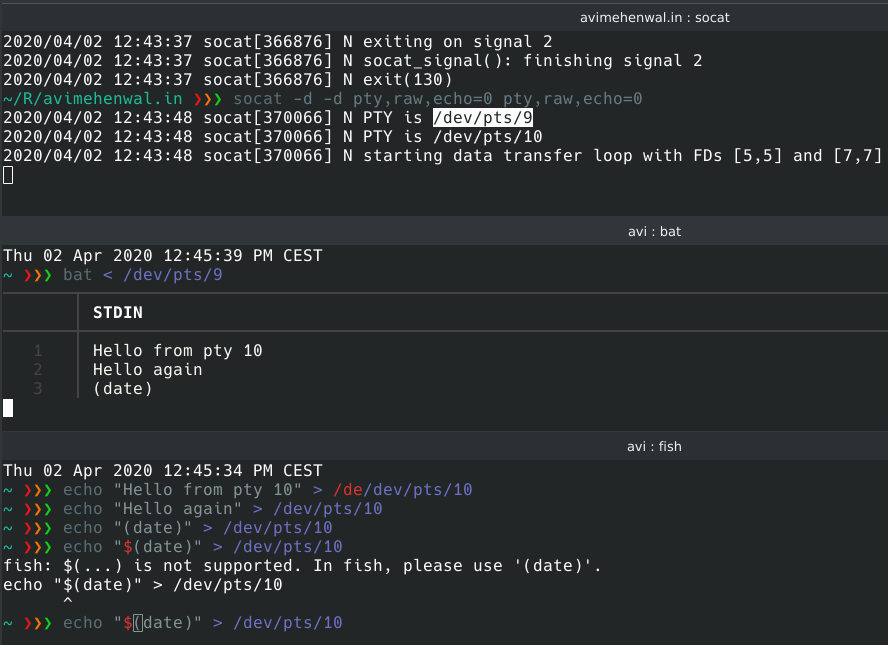

My hack is to run minicom through a screen session at boot time via /etc/rc.local and leave it there. When I manually run minicom and leave it open, not interacting with the program at all and send the same data through socat, the message is sent to the UHF transmitter. Here's my socat string:Ĭode: Select all 5 23:07:20 socat N opening character device "/dev/ttyUSB0" for reading and writingĥ 23:07:20 socat N starting data transfer loop with FDs and The web application works fine, the TCP socket works fine but the serial port at /dev/ttyUSB0 will not allow socat to write data to it when the system is booted. HTTP via a Ruby web application -> raw TCP socket provided by one end of socat -> USB to serial adaptor on the other end of socat -> UHF transmitter I was asked to build an HTTP to serial gateway so users can send pages from a web app. Long version: I have a hardware UHF transmitter with a serial port that can read a very simple ASCII protocol to send alphanumeric messages to a pager (remember those? Doctors still use them).
echoNote: On some operating systems, these options may not be available. Some other rates are possible use something like socat -hh grep ’ b1-9’ to find all speeds supported by your implementation.

I could not find any other utility which properly initialized /dev/ttyUSB0 at boot time. Sets the serial line speed to 19200 baud.

One thing I did not see is where you are connecting to the readyRead signal. As you have already found out, overriding 'run' will block event queue processing.
Short version: I have to run minicom with a slightly modified configuration from the default to initialize the serial port on a cold boot. socat -d -d -v pty,rawer,link
It works but I had to do what I consider a silly hack to get the serial port initialized at boot time. instance method open arbitrary baud rates 25000 baud opens at 25000 baud: Error: Error. lrwxr-xr-x 1 hankboyu wheel 12 Mar 1 13:22 ttys0 -> /dev/ttys009. I created a serial port by using socat PTY,link/tmp/ttys0,raw,echo0 PTY,link/tmp/ttys1,raw,echo0 & I think it created 2 PTY under /dev and let /tmp/ttys0 and /tmp/ttys1 pointing to them.
#SOCAT SERIAL PORT BAUD RATE HOW TO#
I've built a HTTP to pager gateway on a Pi. How to configure virtual serial port's baud rate. I've found a peculiar problem with a project that landed in my lap. I'm new to working with Pi hardware but not new to working with Linux. # while true do socat pty,link=/dev/ttyUSB0,waitslave tcp:pi.:8000 sleep. Socat pty,link=/dev/ttyUSB0,waitslave tcp:pi.:8000Īfter each disconnect the socat client will disconnect as well. On the Ubuntu friend system I started the socat client with: This will connect to the serial port, and stay connected after disconnected clients. # socat tcp-listen:8000,reuseaddr,fork file:/dev/ttyUSB0,nonblock,waitlock=/var/run/tty0.lock,b115200,raw,echo=0 On the Raspberry Pi I started the socat server with:
#SOCAT SERIAL PORT BAUD RATE INSTALL#
To install socat on the Raspberry Pi, and the friend Ubuntu system: The target was a Raspberry Pi with a connected serial device. I found a Linux tool called socat - Multipurpose relay (SOcket CAT) that worked perfectly. I recently needed to talk to a serial port from a remote system.


 0 kommentar(er)
0 kommentar(er)
